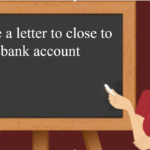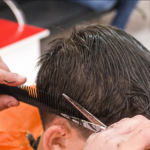Present tense is a verb form used to describe actions, events, or states that are happening now or are generally true. In English, there are four primary types of present tense: simple present, present continuous (progressive), present perfect, and present perfect continuous. Each type serves a different purpose in conveying the timing and nature of an action or event.
1. Simple Present Tense:
- Usage: Describes general truths, habitual actions, or timeless events.
- Examples:
- She sings beautifully.
- They live in New York.
- The sun rises in the east.
2. Present Continuous (Progressive) Tense:
- Usage: Describes ongoing actions or temporary situations happening at the moment of speaking.
- Examples:
- I am writing an email.
- He is playing the guitar.
- They are studying for exams.
3. Present Perfect Tense:
- Usage: Describes actions or events that occurred at an indefinite time in the past but have relevance to the present.
- Examples:
- She has visited Paris twice.
- We have just finished our project.
- He has never eaten sushi before.
4. Present Perfect Continuous Tense:
- Usage: Describes actions or situations that started in the past, continue into the present, and may continue into the future.
- Examples:
- They have been working on this project for two hours.
- She has been studying English since last year.
- I have been waiting for you for a long time.
1) Question: Which sentence is in the simple present tense?
A) She is studying for the exam.
B) They have completed the project.
C) He plays the piano every day.
A) She is studying for the exam.
B) They have completed the project.
C) He plays the piano every day.
Show/Hide
Answer: C) He plays the piano every day.
Explanation: The sentence “He plays the piano every day” is in the simple present tense, describing a habitual action.
2) Question: In which sentence is the present continuous tense used?
A) We visited the museum last weekend.
B) She is baking a cake in the kitchen.
C) He will travel to London next month.
A) We visited the museum last weekend.
B) She is baking a cake in the kitchen.
C) He will travel to London next month.
Show/Hide
Answer: B) She is baking a cake in the kitchen.
Explanation: The sentence “She is baking a cake in the kitchen” is in the present continuous tense, indicating an ongoing action.
3) Question: Which sentence is in the present perfect tense?
A) They play soccer every Saturday.
B) She has finished her homework.
C) He will go to the gym tomorrow.
A) They play soccer every Saturday.
B) She has finished her homework.
C) He will go to the gym tomorrow.
Show/Hide
Answer: B) She has finished her homework.
Explanation: The sentence “She has finished her homework” is in the present perfect tense, indicating a completed action with relevance to the present.
4) Question: What is the correct present tense form of the verb “to dance” in the third person singular?
A) Dance
B) Dancing
C) Dances
A) Dance
B) Dancing
C) Dances
Show/Hide
Answer: C) Dances
Explanation: In the third person singular, the present tense form of “to dance” is “dances.”
5) Question: Which sentence is in the present perfect continuous tense?
A) They have already left for the airport.
B) She has been reading the book for hours.
C) He finishes his work on time.
A) They have already left for the airport.
B) She has been reading the book for hours.
C) He finishes his work on time.
Show/Hide
Answer: B) She has been reading the book for hours.
Explanation: The sentence “She has been reading the book for hours” is in the present perfect continuous tense, indicating a continuous action with relevance to the present.
6) Question: Identify the sentence in the simple present tense.
A) We are going to the beach tomorrow.
B) The sun is shining brightly.
C) She dances beautifully.
A) We are going to the beach tomorrow.
B) The sun is shining brightly.
C) She dances beautifully.
Show/Hide
Answer: C) She dances beautifully.
Explanation: The sentence “She dances beautifully” is in the simple present tense, describing a habitual action.
7) Question: What is the correct present tense form of the verb “to swim” in the first person singular?
A) Swim
B) Swam
C) Swimming
A) Swim
B) Swam
C) Swimming
Show/Hide
Answer: A) Swim
Explanation: The correct present tense form of “to swim” in the first person singular is “swim.”
8) Question: In which sentence is the present continuous tense used?
A) They have played chess for years.
B) I am writing a letter to my friend.
C) He will finish his project by tomorrow.
A) They have played chess for years.
B) I am writing a letter to my friend.
C) He will finish his project by tomorrow.
Show/Hide
Answer: B) I am writing a letter to my friend.
Explanation: The sentence “I am writing a letter to my friend” is in the present continuous tense, indicating an ongoing action.
9) Question: What is the correct present tense form of the verb “to study” in the third person singular?
A) Study
B) Studying
C) Studies
A) Study
B) Studying
C) Studies
Show/Hide
Answer: C) Studies
Explanation: In the third person singular, the present tense form of “to study” is “studies.”
10) Question: Which sentence is in the present perfect continuous tense?
A) They have traveled to many countries.
B) I have been waiting for the bus.
C) She finishes her work before lunch.
A) They have traveled to many countries.
B) I have been waiting for the bus.
C) She finishes her work before lunch.
Show/Hide
Answer: B) I have been waiting for the bus.
Explanation: The sentence “I have been waiting for the bus” is in the present perfect continuous tense, indicating a continuous action with relevance to the present.





